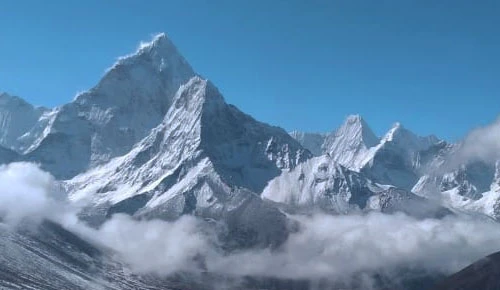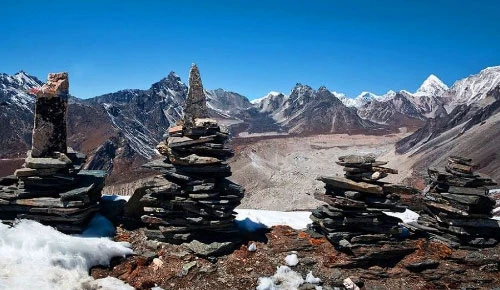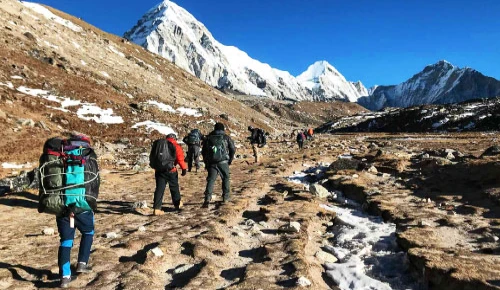Top 10 UNESCO World Heritage Sites in Nepal
Nepal is home to several world-renowned heritage sites that are recognized by UNESCO (United Nations Educational, Scientific, and Cultural Organization). These sites are considered to be of outstanding value to humanity and are protected and preserved for future generations to admire and learn from.
UNESCO World Heritage Sites are placed with significant cultural or natural heritage, according to the UNESCO World Heritage Convention. There are four World Heritage Sites in Nepal: the Kathmandu Valley, Lumbini, Chitwan, and Sagarmatha National Parks are all natural World Heritage Sites. Back in 1979, the Kathmandu Valley and Sagarmatha National Park were the first two places to meet the criteria for this designation. The fourth destination, Lumbini, was added in 1997 after the Chitwan National Park quickly followed in 1984.
Each of these sites, which are UNESCO World Heritage Sites, has a wealth of intriguing culture, history, or just plain natural beauty and diversity to offer. Let's explore the landmarks, monuments, and majesty of nature in more detail to see why these places have been named UNESCO World Heritage Sites. One can enjoy several UNESCO Heritage sites during the Kathmandu City Tour like Pasupatinath Temple, Boudhanath, Swayambhunath, Kathmandu Durbar Square, and Patan Durbar Square.
The top 10 UNESCO World Heritage Sites in Nepal are listed below.
Table of Contents
Pashupatinath Temple

If you thinking to do any type of trekking in Nepal, then don't miss taking a 1or 2-day heritage tour. Pashupatinath, a millennia-old temple devoted to Lord Shiva, is one of the holiest Hindu temples in the entire world. The temple complex is made up of the main temple and its surrounding compound, as well as several other smaller temples, ashrams, and statues. To the east, it is bounded by the revered Bagmati River. Only Hindus are permitted entry to the main temple, although anybody is welcome to watch from the hills next to the Bagmati riverbanks. For tourists, watching the numerous rites, ceremonies, and funerals is a thrilling experience. The enormous number of pilgrims that this temple draws is a tribute to its significance, especially during holy events like Teej and Shivaratri when hundreds of thousands of people come to worship there in a single day. One of the first places in Nepal to get the UNESCO World Heritage Site designation was the Pashupatinath Temple (1979).
Boudhanath

Boudhanath also known as Buddha, Khasti Chaitya, and Khasa Chaitya is a stupa located in Kathmandu. It is a massive mandala making it one of the largest spherical stupas in Nepal and also in the world. Like Pashupatinath is the holiest temple for Hindus, Bouddhanath is also sacred lace for Buddhists. Some sources claim that the spectacular stupa was constructed by a Licchavi King Sivadeva as early as the 5th Century CE, however, there are several Newar and Tibetan Buddhist myths and stories surrounding its construction. It is one of the biggest stupas in Buddhism today, and there are over 40 monasteries nearby. The entire area is filled with Buddhists. Every day, a great number of visitors—tourists, pilgrims, and locals—come to the Stupa for varied purposes.The unique atmosphere of this place is created by a variety of elements, including chanting monks, spinning prayer wheels, flocks of pigeons, and the aroma of incense. Boudhanath was listed in UNESCO World Heritage Site in 1979.
Swayambhunath

Swayambhunath Stupa is a UNESCO World Heritage Site located in Kathmandu, Nepal. It is also known as the Monkey Temple because of the large number of monkeys that inhabit the area. The stupa is believed to have been built over 2,000 years ago and is one of the oldest and most sacred Buddhist sites in Nepal. It is said to have been built by the legendary king Manjushri, who is believed to have drained the lake that once covered the Kathmandu Valley and built the stupa on top of a hill. The stupa is surrounded by a number of smaller shrines, temples, and monuments. It is topped by a large golden spire with the eyes of the Buddha painted on all four sides. The spire is surrounded by a series of prayer flags that flutter in the wind, and it is said that when the flags flutter, they carry prayers and blessings to all beings. This temple was listed as UNESCO World Heritage Site in 1979
Changu Narayan Temple
 Changu Narayan Temple is one of the UNESCO World Heritage Sites in Nepal. It was inscribed on the UNESCO World Heritage List in 1987 as part of the "Kathmandu Valley" cultural heritage site. It is located on a hilltop in the Changu village, about 22 km east of Kathmandu. It is one of the oldest and most important Hindu temples in Nepal, believed to have been built in the 4th century during the Licchavi period. The temple is dedicated to Lord Vishnu and is renowned for its exquisite wood and stone carvings, which depict scenes from Hindu mythology and history. It is also home to some of the oldest inscriptions in Nepal, which provide valuable insight into the history and culture of the Kathmandu Valley. Visitors can explore the temple complex and admire the intricate carvings and sculptures, as well as take in the panoramic views of the surrounding countryside from the hilltop location.
Changu Narayan Temple is one of the UNESCO World Heritage Sites in Nepal. It was inscribed on the UNESCO World Heritage List in 1987 as part of the "Kathmandu Valley" cultural heritage site. It is located on a hilltop in the Changu village, about 22 km east of Kathmandu. It is one of the oldest and most important Hindu temples in Nepal, believed to have been built in the 4th century during the Licchavi period. The temple is dedicated to Lord Vishnu and is renowned for its exquisite wood and stone carvings, which depict scenes from Hindu mythology and history. It is also home to some of the oldest inscriptions in Nepal, which provide valuable insight into the history and culture of the Kathmandu Valley. Visitors can explore the temple complex and admire the intricate carvings and sculptures, as well as take in the panoramic views of the surrounding countryside from the hilltop location.
Kathmandu Durbar Square

Kathmandu Durbar Square is one of the UNESCO World Heritage Sites located in Kathmandu, Nepal. It is also known as Hanuman Dhoka Durbar Square, as it is located in front of the old palace of the Nepali kings. The square covers an area of approximately five acres, and it is surrounded by temples, palaces, courtyards, and shrines, making it one of the most important cultural and religious sites in Nepal. The square was once the royal palace of the Malla and Shah kings who ruled Nepal from the 12th to the 18th century. Many of the palaces and temples were built during this period, and the square was the center of religious and cultural life in Kathmandu. The square was also the site of important ceremonies and festivals.
One of the most important buildings in the square is the Hanuman Dhoka Palace, which was built in the 17th century by King Pratap Malla. The palace has several courtyards, and each courtyard has its own temple and shrine. The palace also has a museum that displays art and artifacts from the Malla and Shah periods. Other important buildings in the square include the Taleju Temple, the Kumari Ghar (home of the Living Goddess), the Jagannath Temple, and the Kal Bhairav Temple. Each temple has its own unique architecture and religious significance. Kathmandu Durbar Square was listed as a UNESCO World Heritage Site in 1979.
Patan Durbar Square

Patan Durbar Square is a UNESCO World Heritage Site located in the city of Lalitpur, which is also known as Patan, in Nepal. The square is a complex of ancient palaces, temples, and courtyards that are built in the traditional Newari architectural style, and it is one of the three Durbar Squares in the Kathmandu Valley, along with the Kathmandu Durbar Square and the Bhaktapur Durbar Square. Patan Durbar Square was originally built in the 3rd century, and it has been renovated and rebuilt several times over the centuries, with the most recent reconstruction work taking place in the 17th century. The square is a fine example of Newari architecture, which is characterized by intricate carvings and detailed artwork on the buildings.
Some of the notable buildings and structures in Patan Durbar Square include:
- The Krishna Temple is a three-story temple dedicated to Lord Krishna and is famous for its exquisite carvings.
- The Golden Temple is a Buddhist monastery that is covered in gold and is home to many precious artifacts and religious objects.
- The Sundari Chowk is a courtyard that is surrounded by four temples, including the Taleju Temple, which is one of the oldest and most important temples in Patan.
- The Mul Chowk is another courtyard that is surrounded by temples and is home to the Patan Museum, which houses many precious artifacts and exhibits related to the history and culture of the Kathmandu Valley.
Bhaktapur Durbar Square

Bhaktapur Durbar Square is one of the UNESCO World Heritage Sites located in Bhaktapur, Nepal. It is a complex of ancient temples, palaces, courtyards, and streets that was the center of the city's political and cultural life until the 18th century. The square is known for its intricate wood carvings, stone sculptures, and intricate architecture. The most famous monuments in the square include the 55-Window Palace, the Golden Gate, and the Lion Gate. The square is also home to several temples dedicated to different deities, including the Nyatapola Temple, the Bhairavnath Temple, and the Dattatreya Temple. Bhaktapur Durbar Square is considered one of the best-preserved medieval cities in South Asia. It has remained largely unchanged for centuries, providing a glimpse into Nepal's rich cultural heritage. The square attracts a large number of tourists each year, who come to admire its beauty and learn about the country's history and culture.
Lumbini

Lumbini is a UNESCO World Heritage Site located in the Rupandehi district of Nepal. It is one of the most significant Buddhist pilgrimage sites in the world and is believed to be the birthplace of Lord Buddha. The site is home to numerous ancient monuments and archaeological ruins that date back to the third century BC. The main attraction of Lumbini is the sacred Maya Devi Temple, which marks the spot where Queen Maya Devi gave birth to Prince Siddhartha Gautama, who later became Buddha. The temple features a bas-relief depicting the birth of Buddha and a sacred pool that is said to have healing powers. Other important monuments at Lumbini include the Ashoka Pillar, which was erected by Emperor Ashoka in 249 BC to mark the birthplace of Buddha, and the sacred Bodhi Tree, which is said to have grown from a cutting taken from the original Bodhi Tree under which Buddha attained enlightenment.
Lumbini World Heritage Site also includes a number of monasteries, temples, and museums that provide visitors with an insight into the history and culture of Buddhism. The site attracts thousands of pilgrims and tourists from all over the world each year and is an important center for meditation and spiritual practices. Lumbini was listed as a UNESCO World Heritage Site in 1997.
Chitwan National Park

Chitwan National Park is a UNESCO World Heritage Site located in southern Nepal. It is one of the most popular national parks in Asia, known for its rich biodiversity and wildlife conservation efforts. The park covers an area of 932 km² and is home to several endangered species, including the Bengal tiger, one-horned rhinoceros, and Asian elephant.
Chitwan National Park was established in 1973 and has since become a model for wildlife conservation in Nepal. The park features a variety of habitats, including tropical and subtropical forests, grasslands, and wetlands. It is also home to over 700 species of wildlife, including 68 mammal species, 544 bird species, and 56 reptile and amphibian species. Visitors to Chitwan National Park can explore the park on foot or by jeep, elephant or canoe. Guided tours are available, and visitors can spot various wildlife species such as the one-horned rhinoceros, Royal Bengal tiger, Gharial crocodile, and several species of deer and monkeys. Apart from wildlife spotting, visitors can also learn about the Tharu people who have been living in the region for centuries. The Tharus have a unique culture and lifestyle that has evolved over the centuries, and their traditional homes and customs are on display in the park.
Chitwan National Park is a popular destination for eco-tourism, wildlife lovers, and nature enthusiasts. It offers visitors a unique opportunity to experience Nepal's natural beauty and wildlife in a safe and sustainable way. Chitwan National Park was listed as a UNESCO World Heritage Site in 1984.
Sagarmatha National Park

Sagarmatha National Park is a UNESCO World Heritage Site located in the Solu-Khumbu district of Nepal. It is home to some of the world's highest mountains, including Mount Everest, and is known for its unique Himalayan ecosystem, rich biodiversity, and cultural significance.
The park covers an area of 1,148 square kilometers and is home to several rare and endangered species of flora and fauna, including the snow leopard, Himalayan black bear, red panda, and several species of birds. The park also boasts several glaciers, lakes, and high-altitude valleys, making it a popular destination for trekking and mountaineering. One of the main attractions of Sagarmatha National Park is Mount Everest, which is the highest peak in the world at 8,848 meters. The park also includes several other high peaks, including Lhotse, Nuptse, and Ama Dablam, among others.
Apart from its natural beauty, Sagarmatha National Park also has cultural significance, as it is home to several Sherpa villages and monasteries. The Sherpas, who are known for their mountaineering skills, have lived in the region for centuries and have a rich culture and history.
Visitors to the park can explore the Sherpa villages, hike to high-altitude lakes, and trek to Everest base camp, among other activities. The park is a must-visit destination for anyone interested in experiencing the unique beauty and culture of the Himalayas. Sagarmatha National Park was listed as a UNESCO World Heritage Site in 1979.
Note: All the images in this blog were taken by Bijay Chaurasia Photography for Nepal Trek Adventures under CC-BY-SA-4.0. Don't forget to add the copyright tag.





